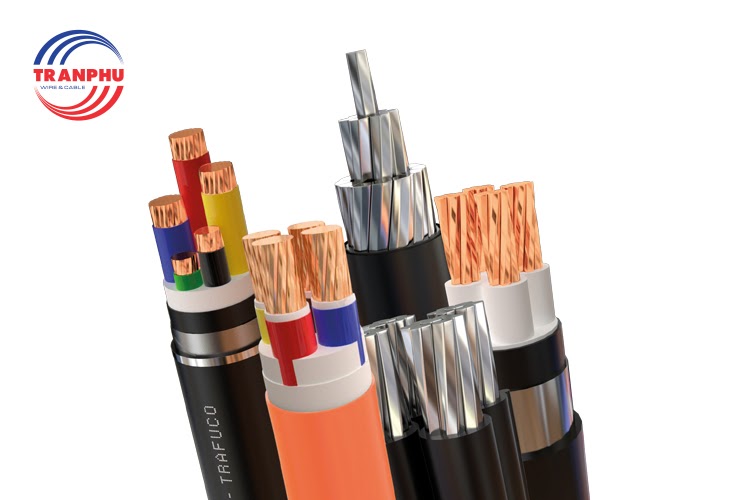Copper and aluminum conductors are the two popular types of wire because of their common use in all electrical projects and equipment today. But not everyone understands the pros and cons of each type of conductor. Therefore, Tran Phu Wire and Cable will provide the information needed to better the understanding of these two conductors, as well as to choose the best one that suits your project.

The choice of copper or aluminum conductor needs to be based on many criteria
Conductors comparison criteria
When choosing or evaluating a good conductor, we usually pay attention to the following 5 criteria:
- Conductivity: the conductivity of the wire is extremely important, the higher the ability to conduct electricity is, the less that conductor will cause power losses.
- Purity: during the manufacturing process, not every metal can be produced with 100% purity, but it is often mixed impurities that later affects the conductivity of the wires.
- Durability: all electrical systems that get installed are often prioritized using long-lasting conductors. This will minimize the cost of future repairs, and most importantly, ensure electrical safety for the project when being operated.
- Weight: in the power transmission process, the type of conductor with a heavyweight will need larger poles which increase costs.
- Cost of raw materials: manufacturers need to consider input factors to ensure to provide customers with products at a reasonable price.
Comparison between copper and aluminum conductor
The following is a detailed assessment of copper conductor and aluminum conductor according to these 5 criteria:
|
Features
|
Copper conductor
|
Aluminum conductor
|
|
Conductivity
|
Copper is a very good conductive element (second only to silver).
Copper resistivity:
Soft copper: 0.173 Q.mm2 s/m
Hard copper: 0.017 - 0.018 Q.mm2 s/m
|
Aluminum conducts less electricity than copper with the resistivity is about 0.083 - 0.280 Q.mm2 / m
|
|
Purity
|
The copper conductor that has the best quality is the one with 99.99% of purity
|
Aluminum conductors should have a purity of 99.5%
|
|
Durability
|
Hard copper: 300 – 400 N/mm2
Soft copper: 180 — 220 N/mm2
|
Hard aluminum: 160 N/m2
Soft aluminum: 80 N/m2
|
|
Weight
|
Copper is 2.5 times heavier than aluminum
|
Aluminum is 2.5 times lighter than copper
|
|
Cost
|
Copper is a precious metal so that its price is higher than aluminum
|
As Vietnam has many bauxite ores, the price of aluminum is quite cheap
|
These two types of conductors have their own advantages and disadvantages. Even though copper conductors clearly show their advantages compared to aluminum conductors in terms of quality such as durability, conductivity, etc., the price of input materials is quite high causing many manufacturers consideration to optimize production costs.
See more: The types and specifications of Tran Phu wires and cables
Practical application of these types of conductor
Based on the features of the two types of the conductor, they are applied differently in practice:
Copper conductor: used extensively in electrical equipment, households to ensure optimal conductivity and durability.
Aluminum conductors: applied in many electricity industries to transmit electricity in order to optimize the cost of large power transmission lines.
Each product will have its own features that suit different needs. Whether choosing copper or aluminum conductors, finding a reputable and quality product is also what consumers should first consider. Tran Phu wire and cable is one of the rare units that choose to use quality materials instead of optimizing costs using imported LME copper with 99.99% of purity and aluminum with 99,7% of purity during production. This is also one of the reasons that Tran Phu wire and cable is able to maintain its brand reputation during 36 years of establishment and development.
CONTACT INFORMATION:
Tran Phu Electric Mechanical Joint Stock Company
Address: No. 41, Phuong Liet Str., Phuong Liet Ward, Thanh Xuan Dist., Hanoi.
Hotline: 0898.41.41.41
Email: contact@tranphu.vn
Website: www.tranphu.com.vn